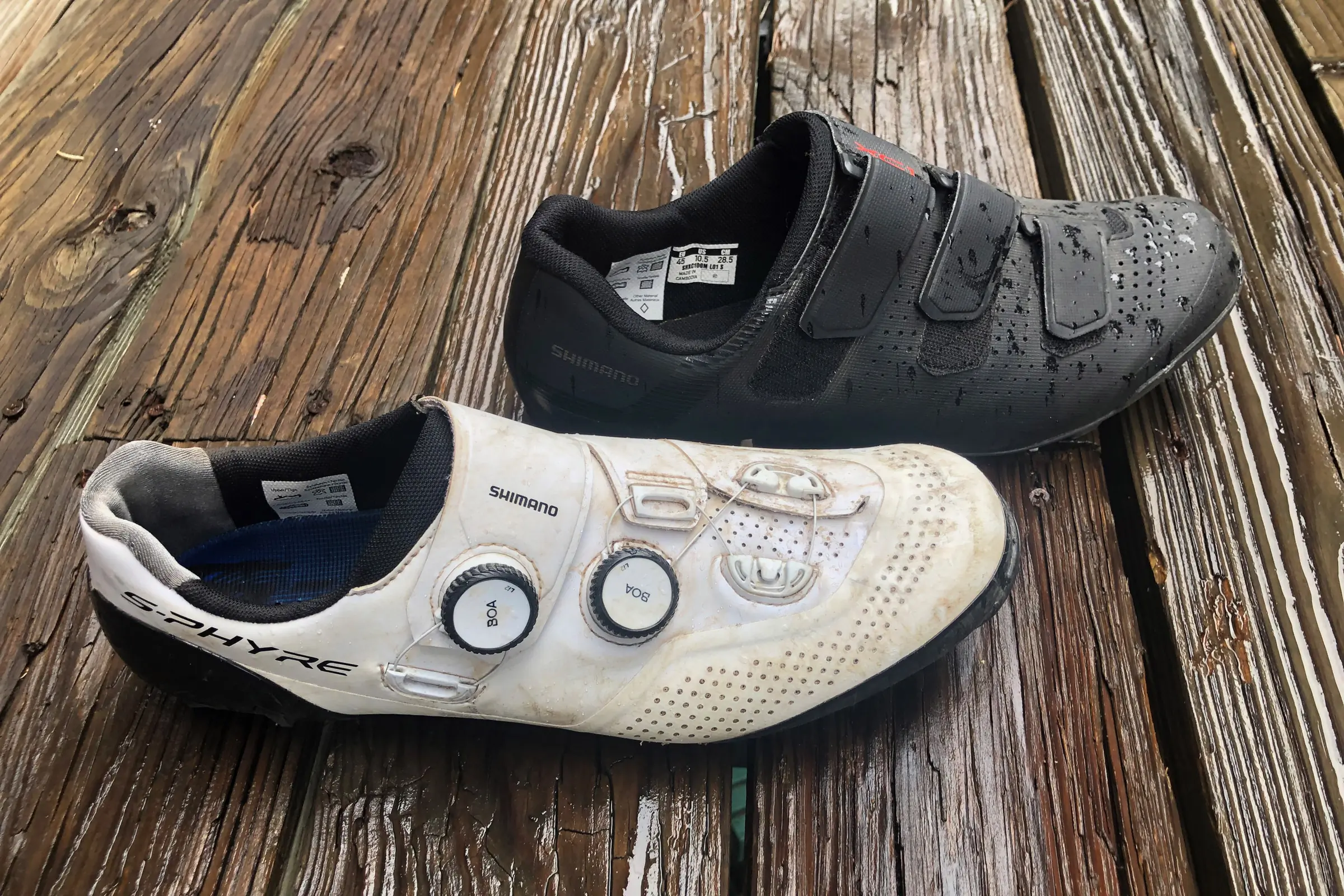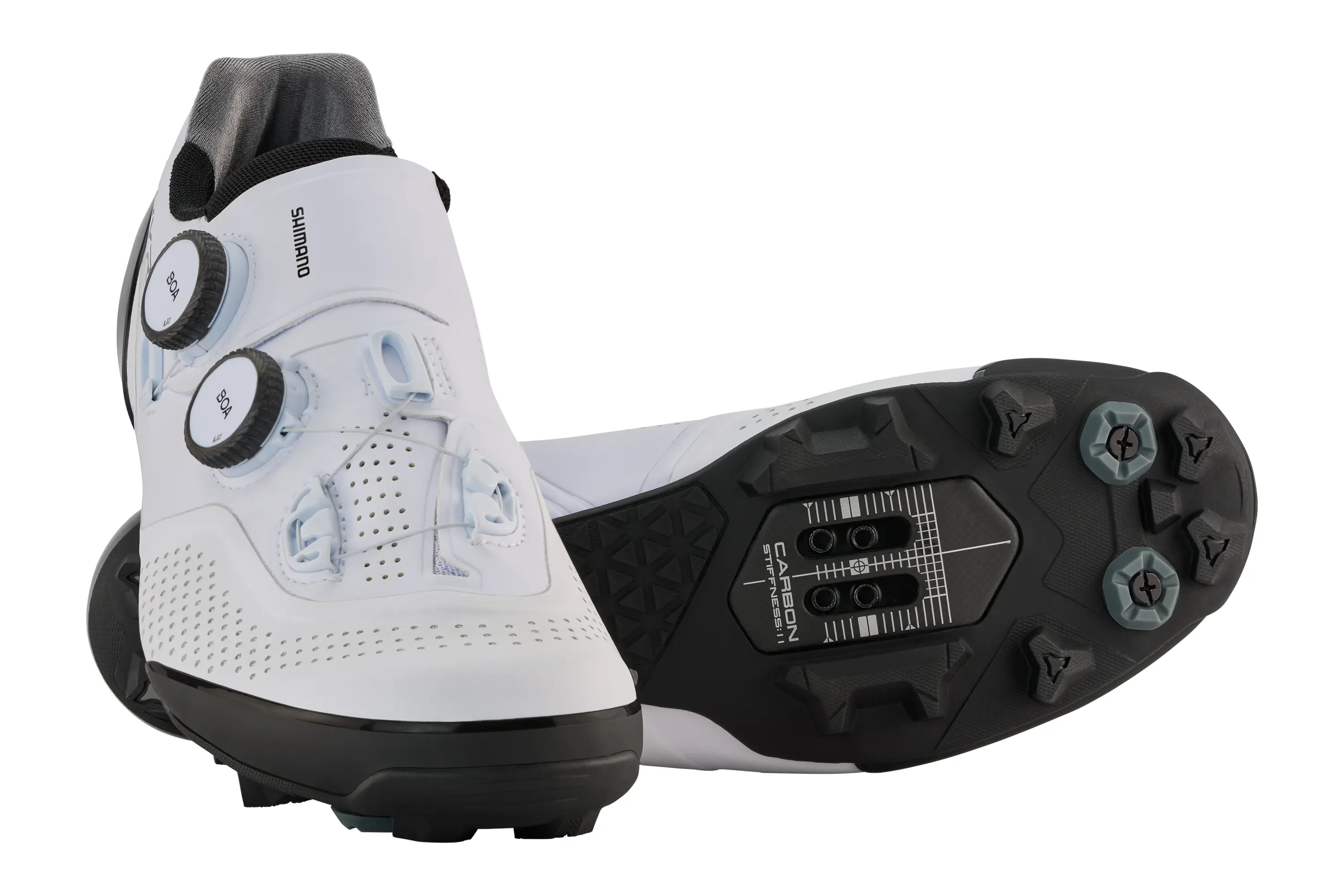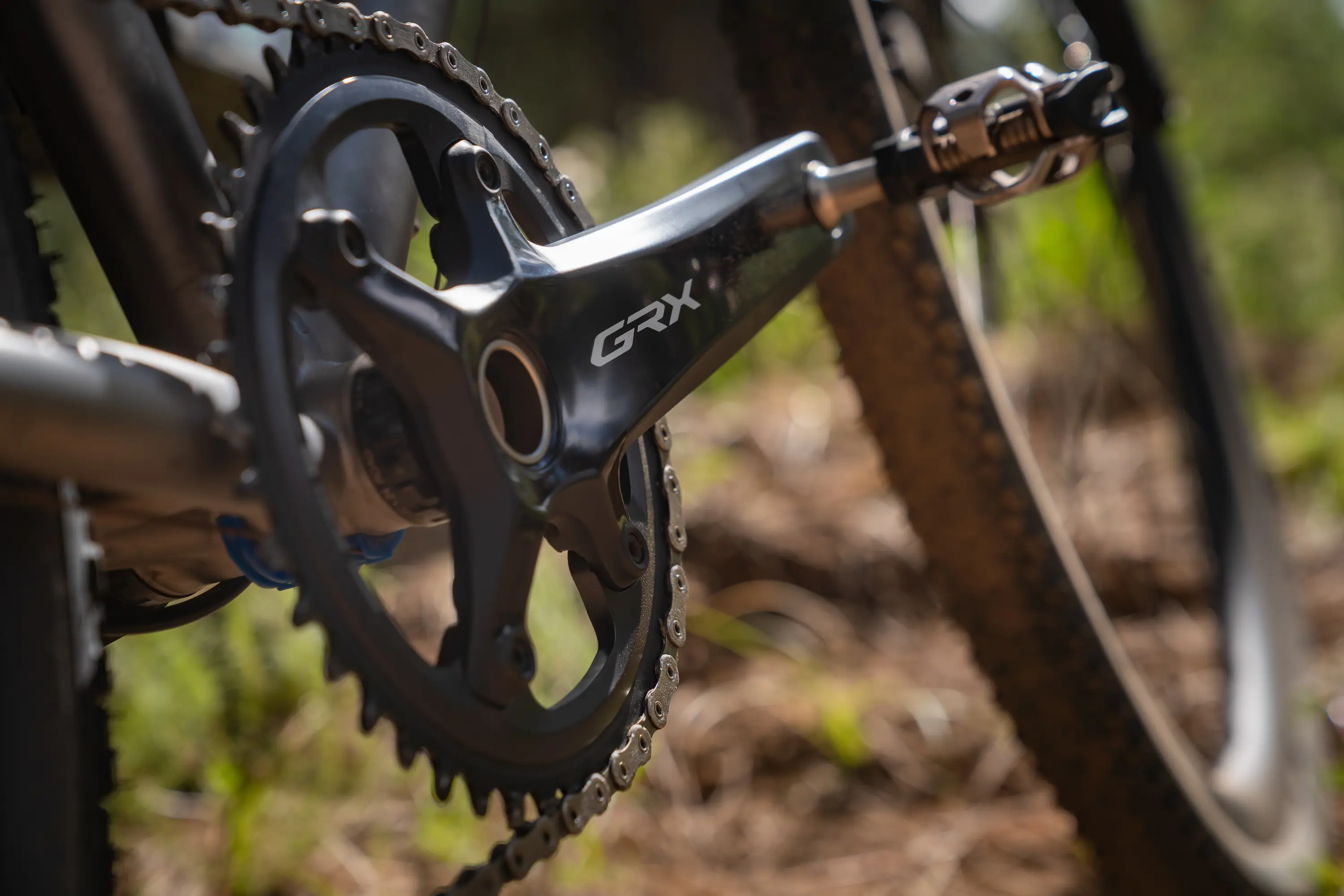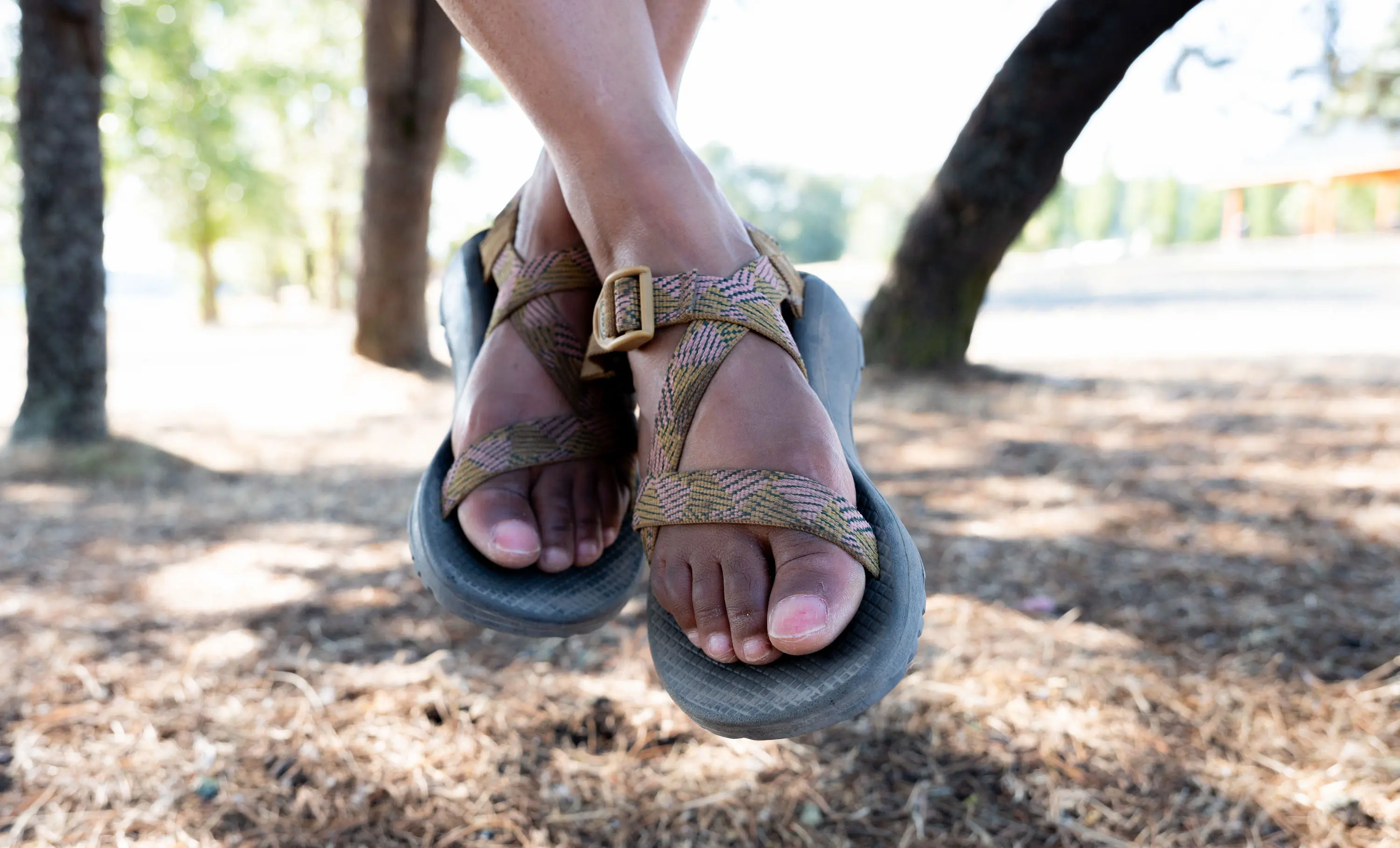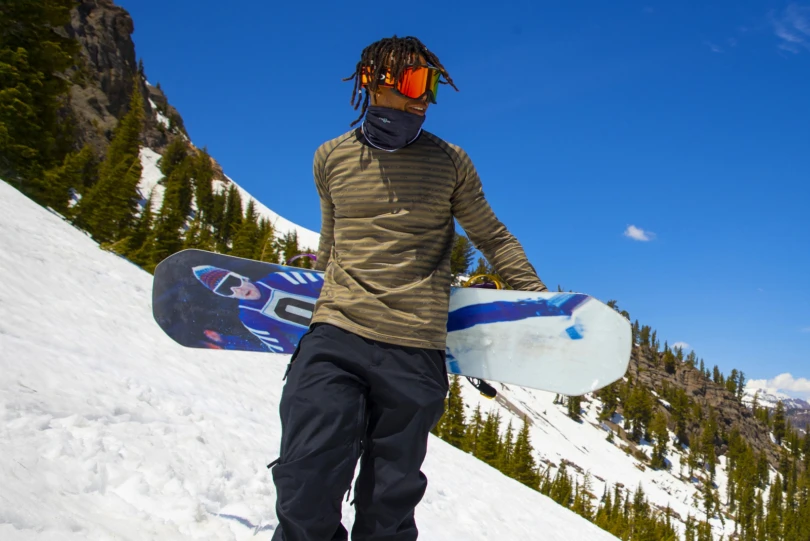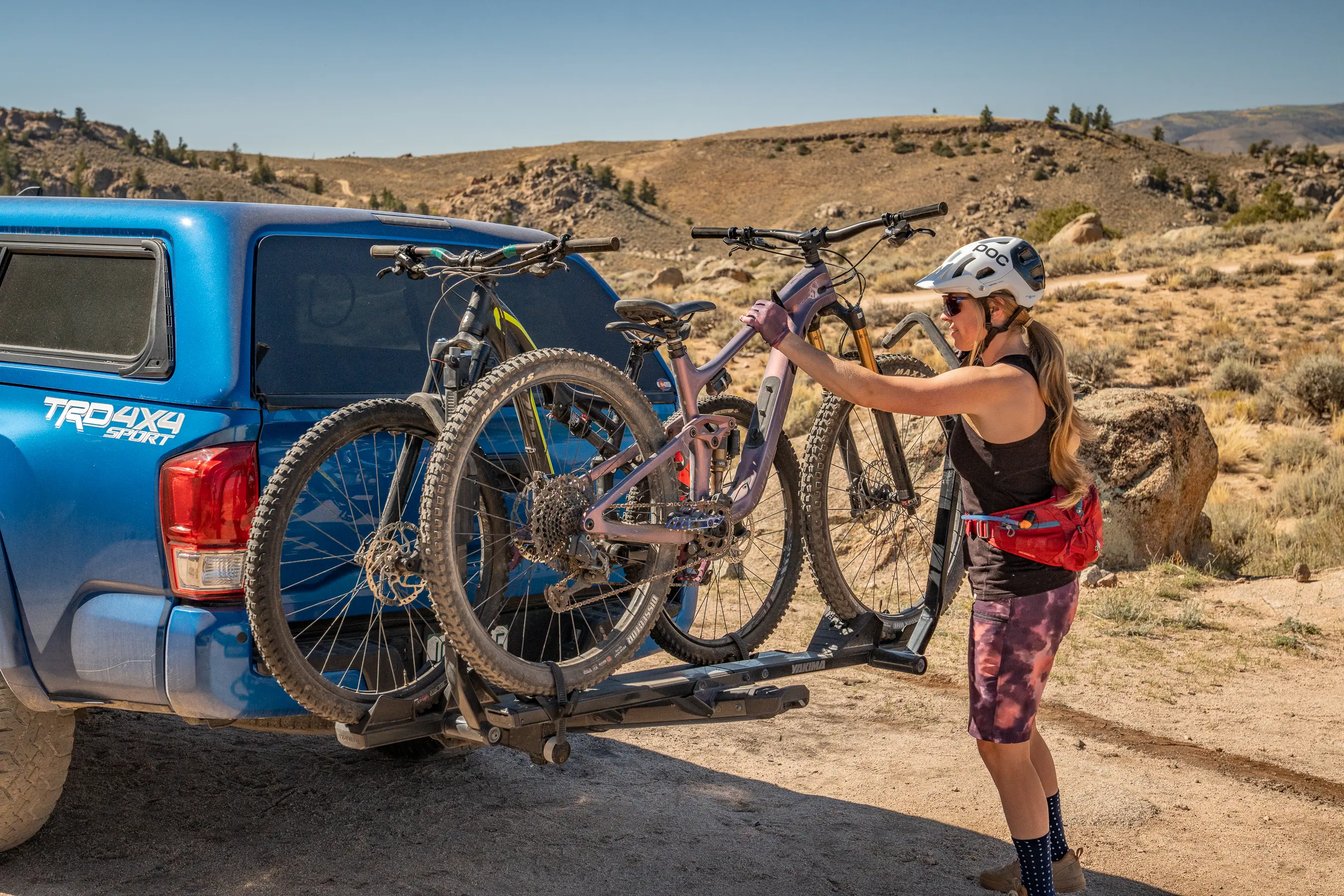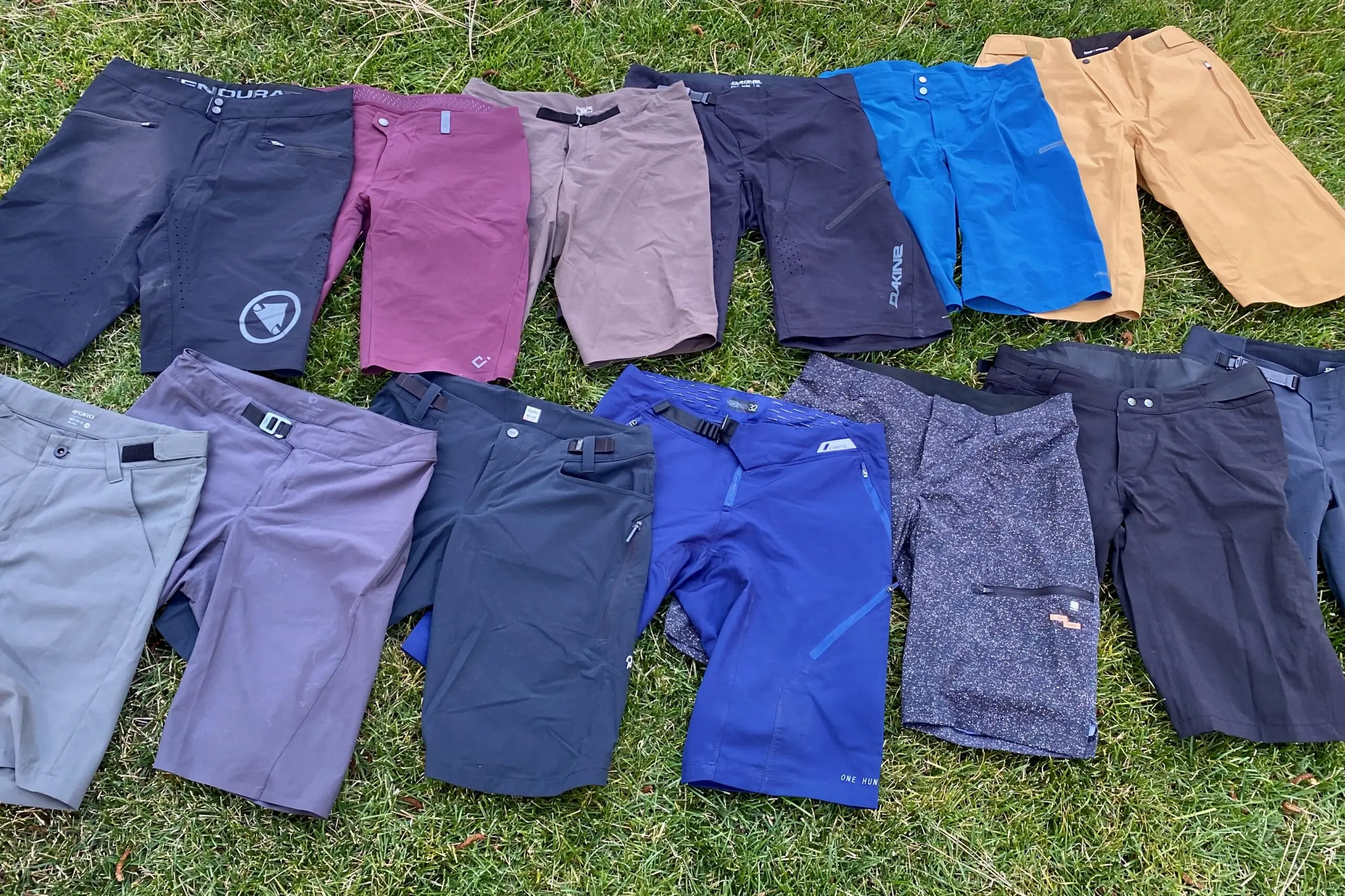Three hundred riders charged up Aspen Mountain’s unrelenting face. I found myself somewhere in the top third of the pack, sweat pouring down my face. My legs were thrashed, and my feet were in shambles. It was stage two of the Elk Mountains Grand Traverse, the 40-mile cross-country mountain bike race following the ultramarathon trail run the day before.
Shimano’s flagship S-PHYRE XC9 shoes showed up at my house 2 days prior to the race — comfortable ultralight shoes to the rescue. There was no time to break them in. On race day, I gently slipped my battered feet inside, careful not to disturb the smoldering blisters or painfully discolored toes. They were like slippers custom molded to my heinous feet.
As I spun the pedals over the next 6 hours with spent legs, I was thoroughly thankful for their remarkable power transfer and lack of weight. That’s what the top-end shoe from a company known for drool-worthy products will do for you.
But that got me thinking. At $430, the S-PHYRE XC9 won’t make it to the feet of most mountain and gravel riders. Fortunately, Shimano produces a huge range of cycling shoes. At $100, their entry-level XC1 shoes make a lot more sense for more people, so I put them both to the test.
Can the budget-friendly Shimano XC1 keep up with the blazing white carbon stallion S-PHYRE XC9? Could the flagship’s chiseled weightlessness survive the beating of Colorado’s mountains as well as the workhorse XC1’s? In a pure price-to-performance ratio, which shoe pedals to victory?
In short: Shimano’s S-PHYRE XC-9 shoes are phenomenally lightweight, stiff, and comfortable but come with a whopping $430 price tag. Their budget-friendly $100 XC1 shoes make a lot more sense price-wise for the majority of riders out there in exchange for some performance tradeoffs. And while the performance gap isn’t subtle, I found the XC1s a more than adequate shoe on the trail. Plus, they compete toe-to-toe with the top-end shoe in more ways than one.
- Verified weight: 371 g/shoe, w/cleat, size 45
- Upper material: Microfiber synthetic leather
- Midsole material: Carbon fiber composite
- Outsole material: ULTREAD rubber
- Closure: 2 BOA Li2
Pros
- Extremely stiff and efficient midsole
- Incredible, precise fit
- BOA closures are easily adjusted while riding
Cons
- Difficult and uncomfortable to walk in
- Vibration transfer is high
- Verified weight: 363 g/shoe, w/cleat, size 45
- Upper material: Synthetic leather
- Midsole material: Glass fiber-reinforced nylon
- Outsole material: Rubber
- Closure: 3 Velcro straps
Pros
- Excellent value
- Light for price
- Vibration damping midsole
- Good fit for price
Cons
- Potential durability issues with Velcro closure
- Not as efficient power transfer as others
Shimano S-PHYRE XC9 & XC1 Head-to-Head Review
Shoe Chassis

Right off the bat, the S-PHYRE XC9 shoes, when paired with Shimano’s XTR pedals, introduced an incredible levity. Between their weightlessness and efficient transfer of power, it felt like they were full of helium.
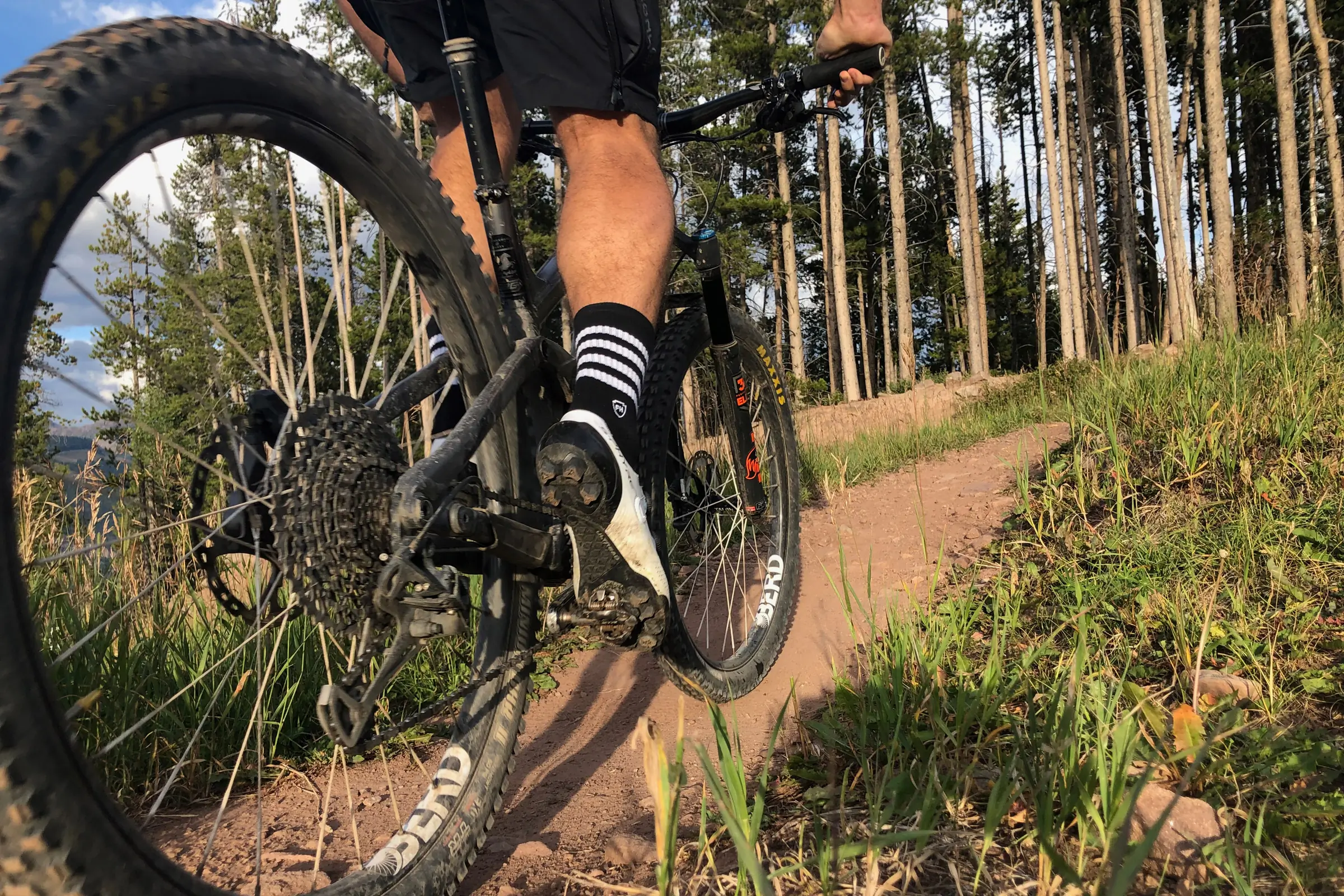
Every pedal stroke felt effortless until I got used to them. It was a lot like the feeling of jumping on a pair of ultralight carbon wheels for the first time.




The less expensive XC1s are no slouch in the weight department. In fact, the scale revealed that the shoes are even a hair lighter than the S-PHYRE’s 371 g at 363 g per shoe with cleats installed (size 45). It takes a lot of creative engineering to drop the weight further on already featherweight shoes — every gram shaved is more expensive than the last.
Lightening the load on your feet is nearly as impactful as lightening your wheels on ride quality. With every pedal stroke, you’re lifting that weight to push it back down for thousands of reps every ride, which adds up over 40 or 50 miles. Fortunately, both of these models cut the weight to an absolute minimum.
Fit Comparison
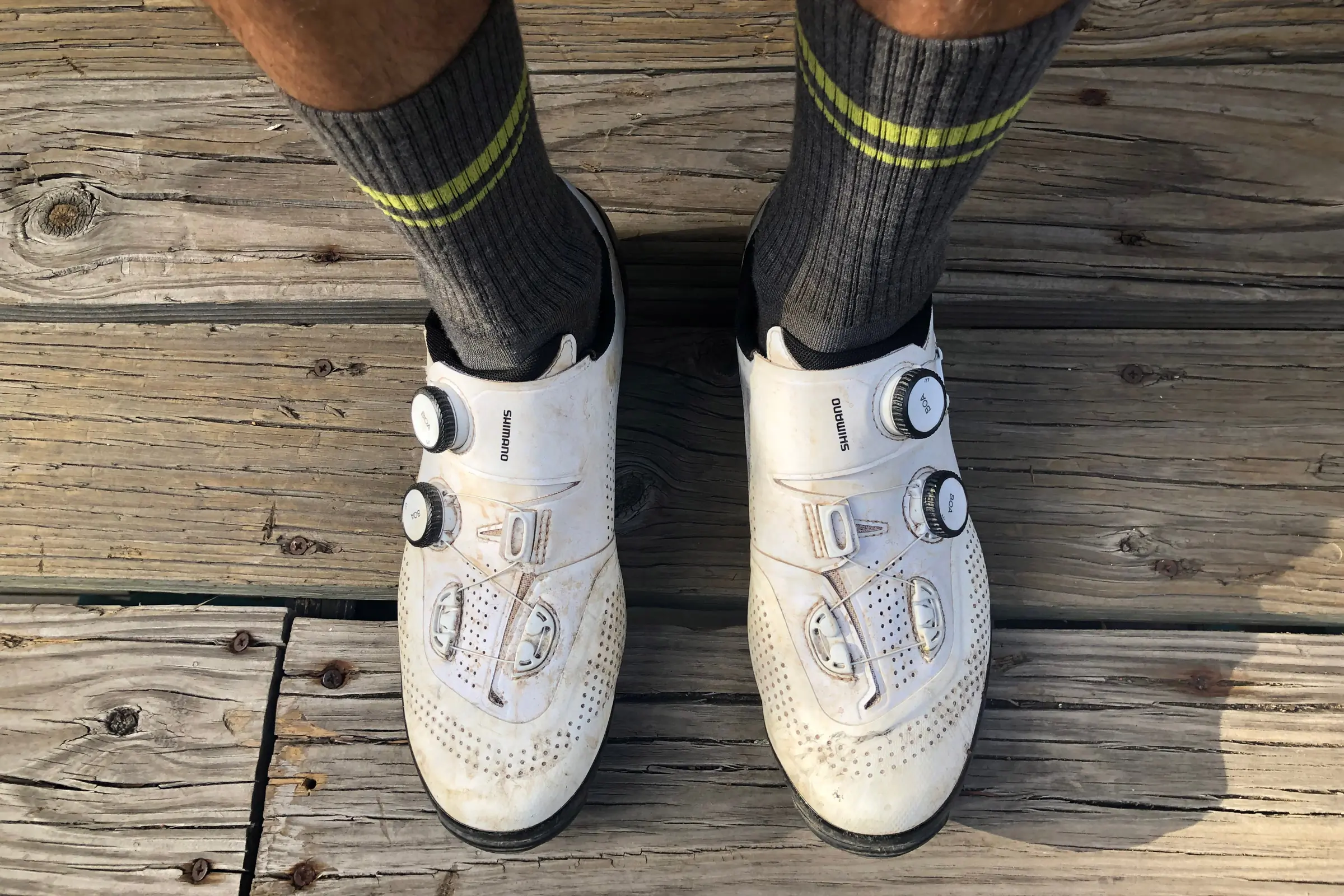



Stepping into the Shimano S-PHYRE XC9 felt like dropping my foot into a custom-made cocoon. It was an out-of-the-box fit I’m not sure I’ve ever felt. It was remarkable. For context, my foot shape is about as challenging as they come — ultra-high arches, hammer toes, and all kinds of strange bumps.
The Shimano XC9 comes with shims to dial in the arch support. Surprisingly, I took them out of the box, bolted the SPD cleat in to match the XTR pedal, slid into the shoes, and took them out. After 200 miles, I have not felt the need to adjust anything. They just fit incredibly well.
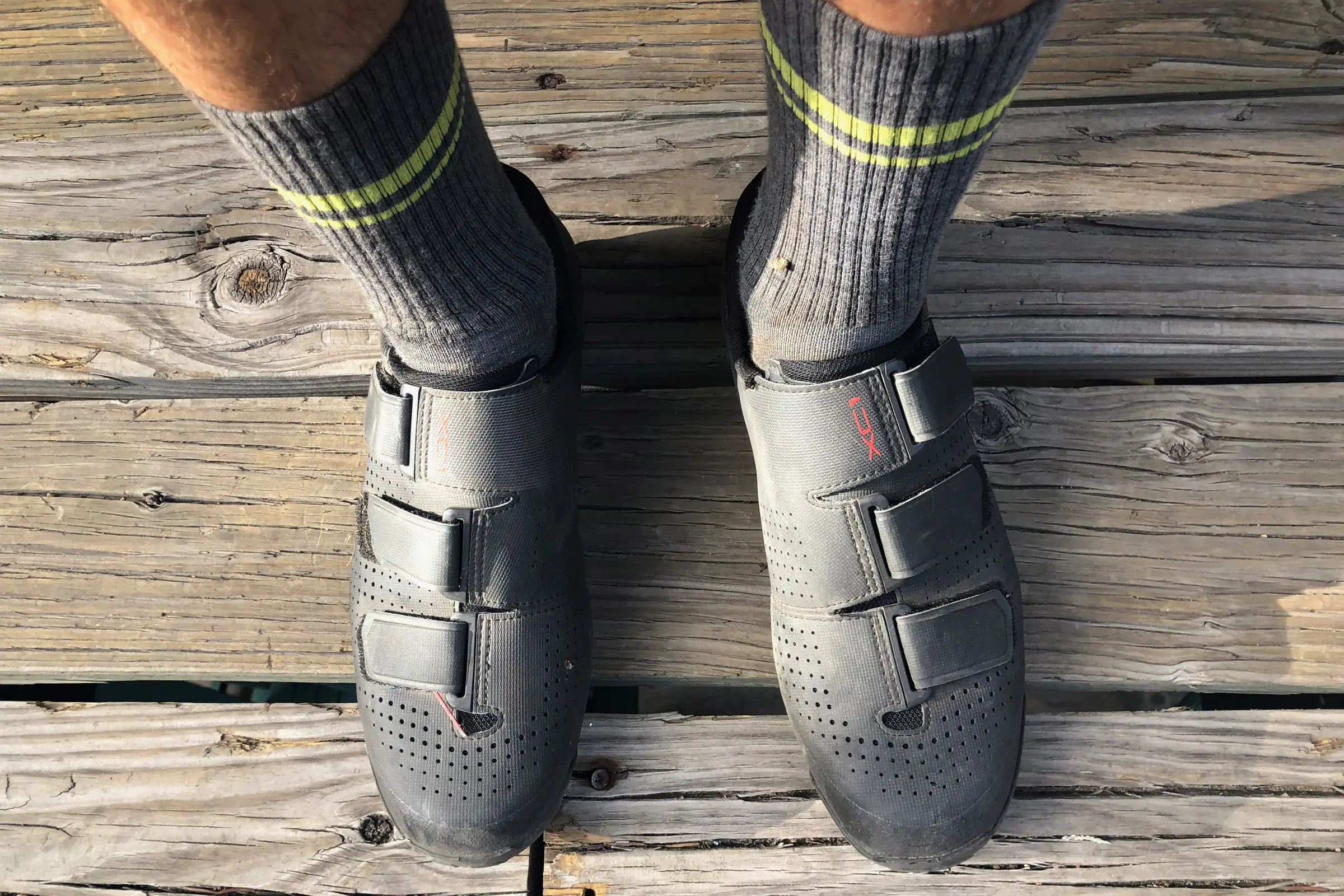



Sliding my foot into the Shimano XC1 wasn’t the luxurious experience of the S-PHYRE, but it wasn’t negative, either. It didn’t feel like the shoe was made just for me — they’re roomier and have a more generic fit. The footbed was more like a placeholder. The heel cup was more a cradle than a cocoon.
Everything was less precise. But honestly, I’ve found them to be pretty dang comfy for an entry-level shoe. My toes didn’t jam into the front, my foot didn’t slide around too much, and I haven’t experienced any pain during longer rides.
Closure Systems: BOA vs. Velcro
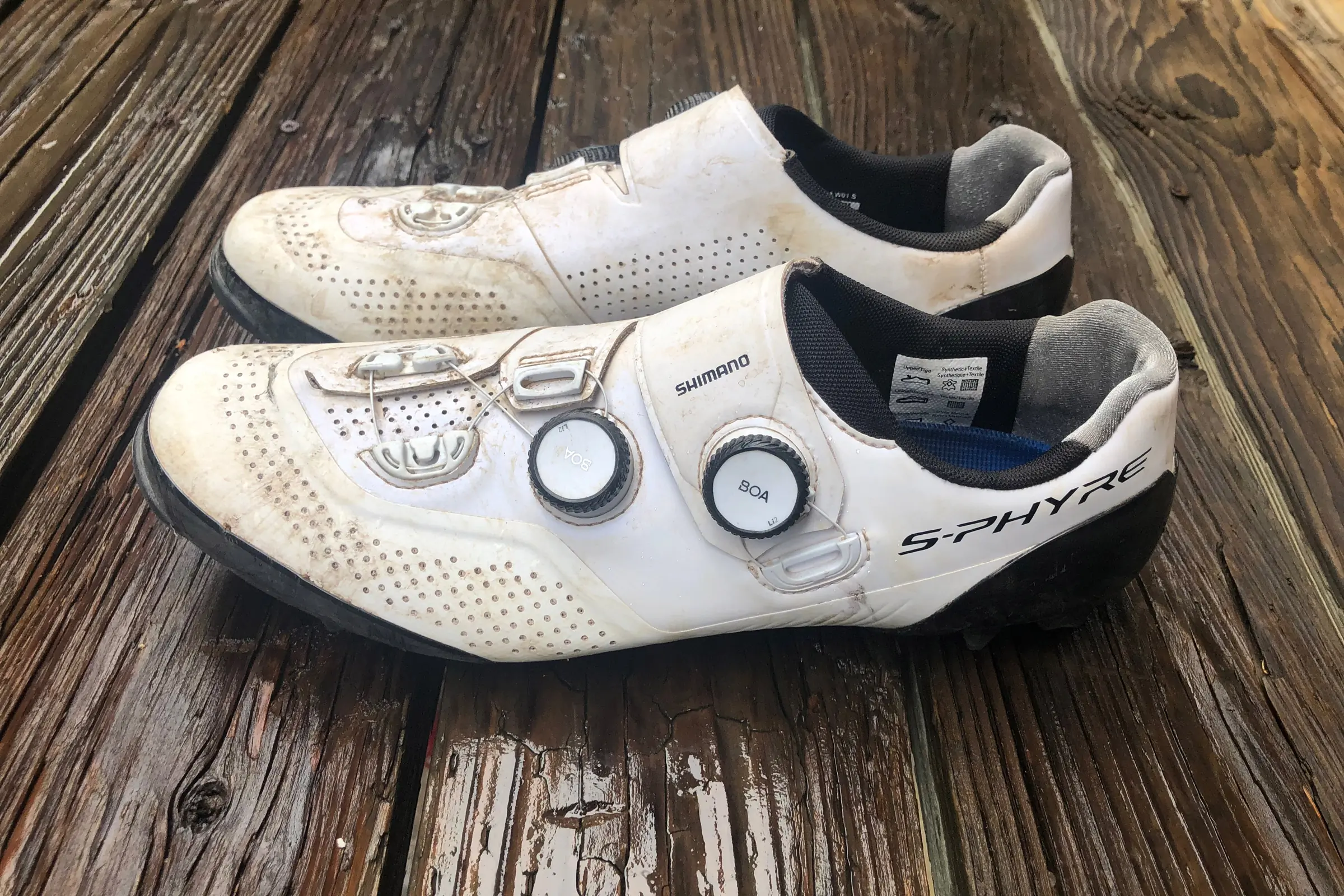



Here is where the fit gets dialed in for action and performance. The Shimano S-PHYRE XC9, like most high-end shoes these days, relies on two BOA Li2 dials that tighten steel cables laced over the top of the shoe. The Shimano XC1 relies on a more classic three-strap Velcro arrangement.
I’ve been a slow convert to BOA closures. I’ve broken so many over the last decade. Some have been easy to replace, and some have sent otherwise healthy shoes and boots to the graveyard. But a lot has changed over the last 10 years. The dials themselves and the integration within shoes have gotten far more durable. The Li2 dials on the XC9 are elegant, secure, and durable.
I tended to tighten them down to a comfortable pressure before getting on the bike, and then tightened them further once my foot and the shoes warmed up a little bit after a few miles. I love the two-dial system because you can easily pop open the lower dial to release the pressure on your toes and forefoot. Getting a secure fit from heel to toe was easy with the two dials; getting them super tight is hard, but I didn’t find myself wishing for more.




The Shimano XC1’s Velcro straps did an OK job of locking down my foot, but I didn’t find the leverage that I needed to get what felt like a tight fit. Once I put the Velcro together, though, they didn’t budge.
Adjusting tension between the toe and instep was easy enough. The slight float of my foot in the shoe contributed to some loss of power, but they’ve been plenty comfortable. The somewhat generic fit did a fine job on the trail.
Sole Stiffness
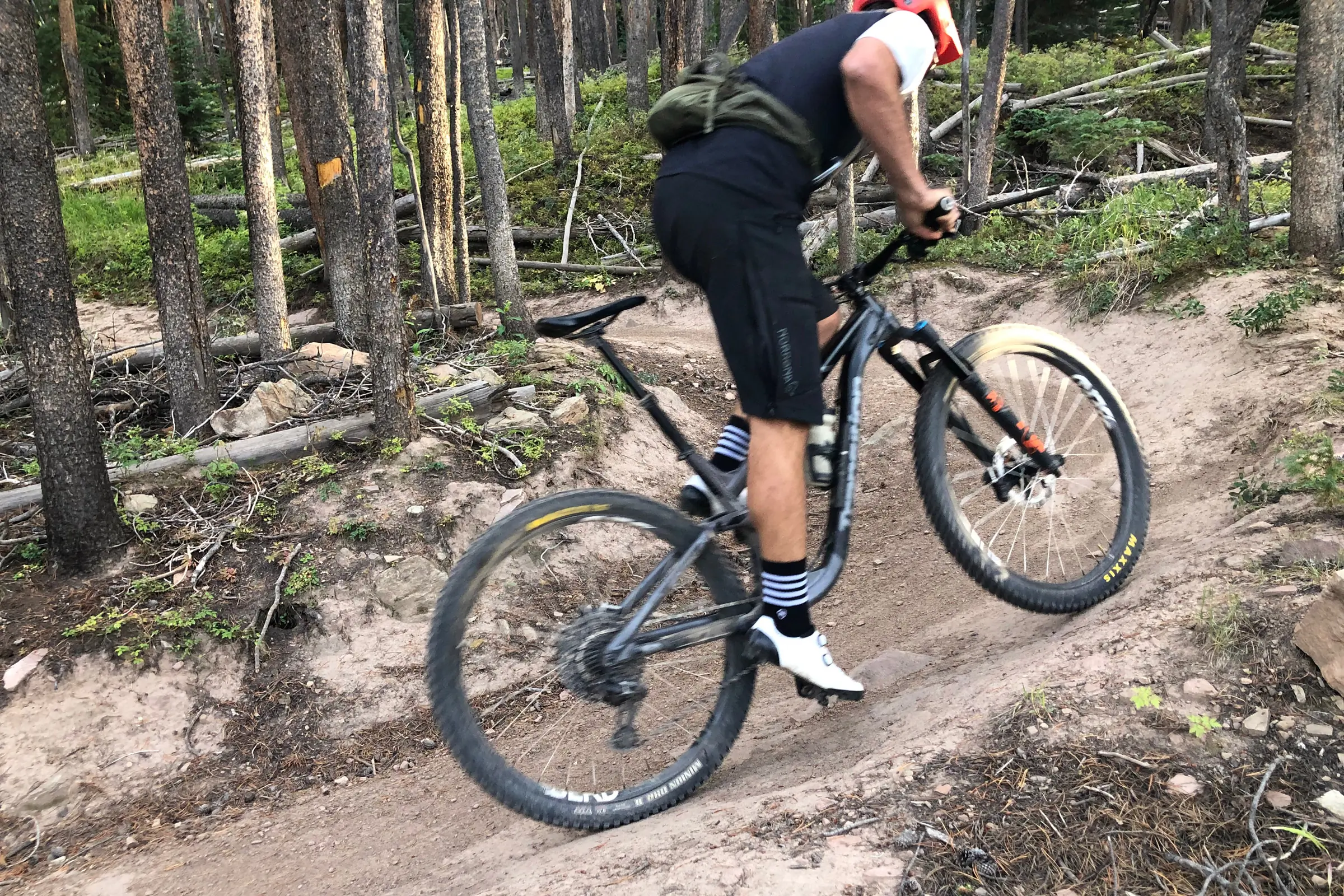



The stiffness that the flagship S-PHYRE XC9 provided was remarkable. There was virtually no bending, no flex, and no loss of power. The soles are nearly rigid — just slightly more forgiving than a road shoe. The Shimano XC1 had much more give, particularly in the forefoot and also torsionally.
Undoubtedly, the ultra-stiff shoe transferred power significantly better than the softer shoe. There’s not a flexible shoe anywhere near the Tour de France peloton. And it’s not subtle — pushing the pedals in the S-PHYRE XC9 felt like having a little extra power boost.
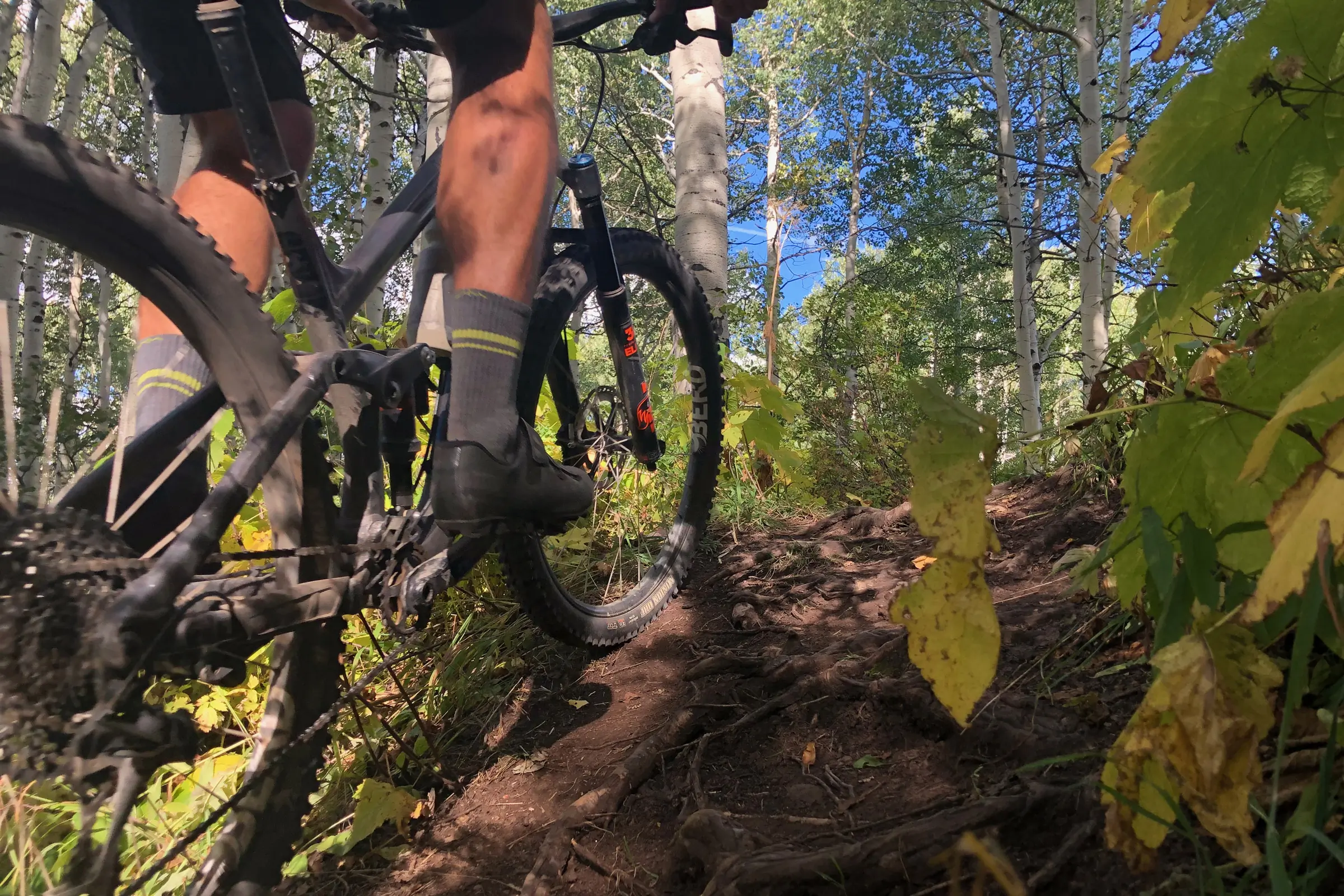



But mountain biking is a dynamic sport. Pure rigidity isn’t the magic formula for every ride, every condition, or every rider. The flip side of power transfer is vibration transfer. Stiff soles damp far less vibration than softer soles. For example, Washboard gravel was much less debilitating in the Shimano XC1 than the S-PHYRE. Technical rock gardens felt more abusive in the stiffer shoe.
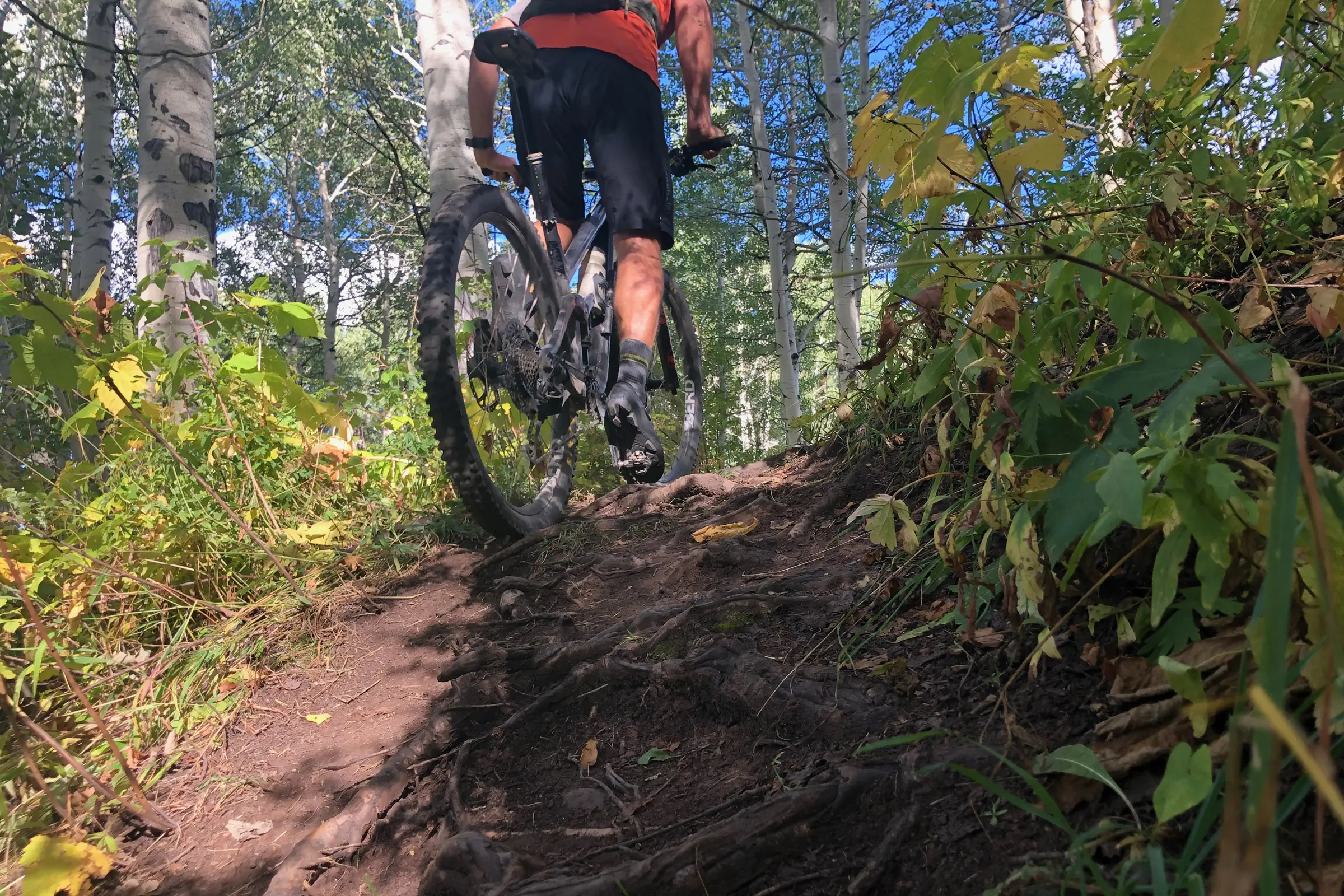



Enduro and gravity-oriented shoes typically employ some flexibility for this reason. It allows your foot to flex over the pedal to help absorb impacts. Very rigid shoes are basically relegated to riding on top of the pedals.
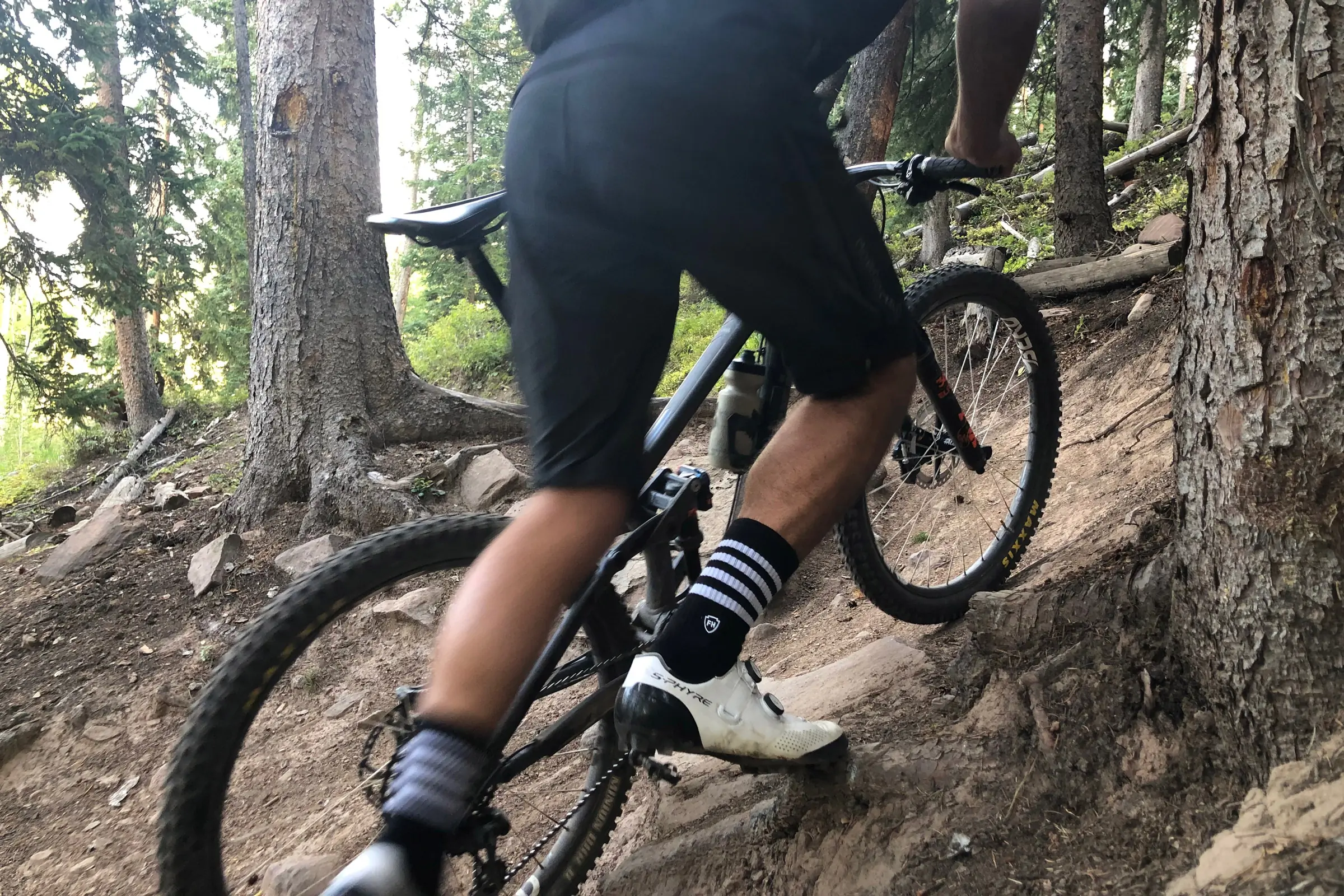



Ultra-stiff shoes also leave a lot to be desired in hike-a-bike sections. In September, I tested the S-PHYRE on the notoriously steep, rocky hiking sections of the Elk Mountains Grand Traverse bike race. Unlike my much softer enduro-style bike shoes, hiking technical terrain was challenging.
Because the soles don’t flex, my entire weight was supported by the very tip of my toe. Or, my heel dropped to the ground with every step, which was an awkward way to walk uphill.
When the sole wasn’t flexing, my heel was probably moving around, rubbing, and potentially blistering. The Shimano XC1 hiked better for this reason. That flex allowed me to walk more naturally, and it put more of the sole into the dirt for better grip.
Shimano S-PHYRE XC9 vs. Shimano XC1: Durability
There’s a reason the Shimano S-PHYRE XC9 and other top-end shoes are so light. It’s because the designers meticulously trimmed every gram of excess weight, every last superfluous feature that didn’t contribute to winning medals in cross-country mountain bike events. That comes at a cost to the average user. Long-term durability is not the S-PHYRE XC9’s forte like winning races is.
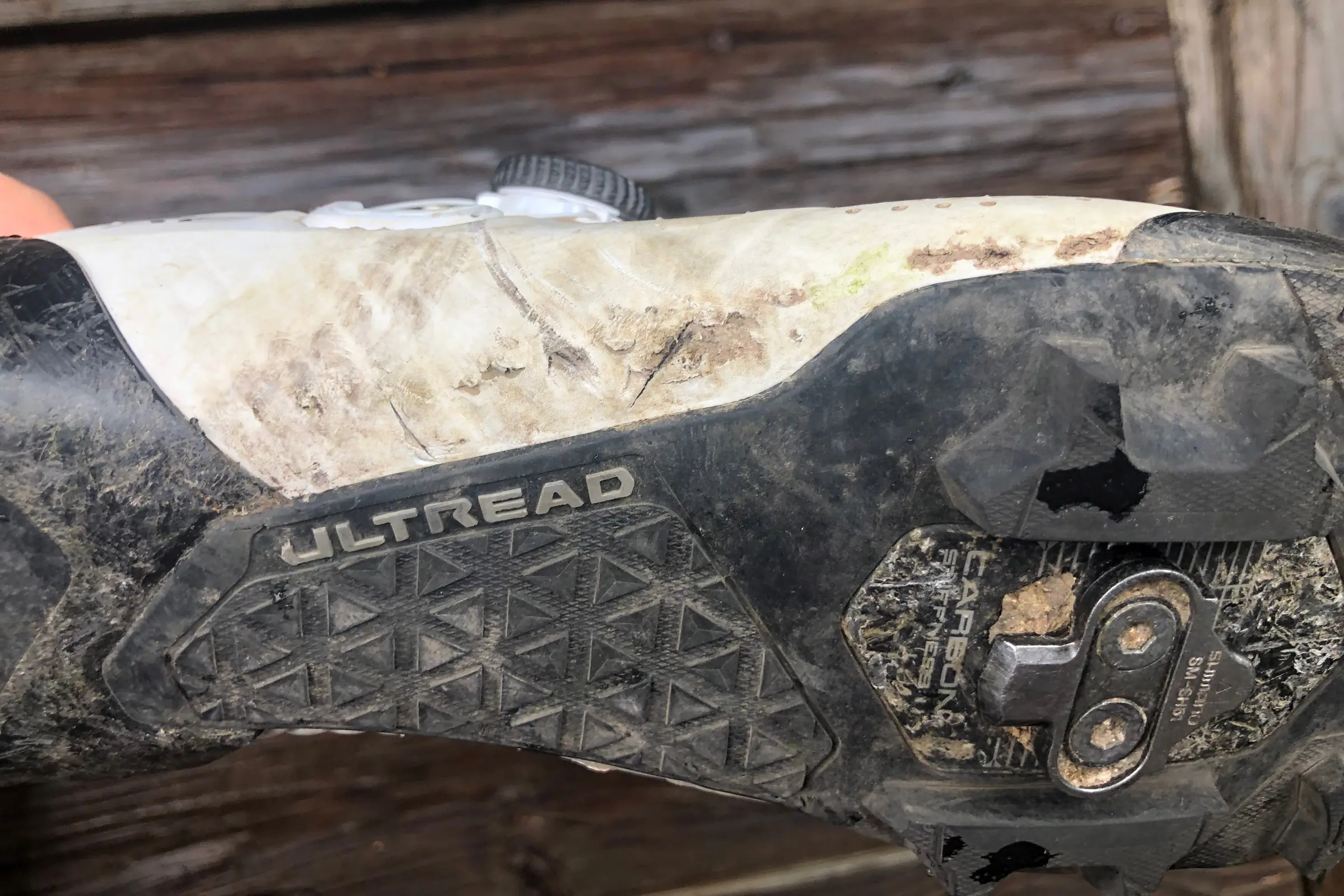



The arduous aforementioned Grand Traverse hike-a-bike, for example, did visible damage to the shiny white exterior of the shoe along the edges of the fortified outsole where the two materials join. They were by no means totaled, nor was the performance impacted, but the damage was an indicator of how the shoe might stand up to the rigors of long-term alpine riding in Colorado.
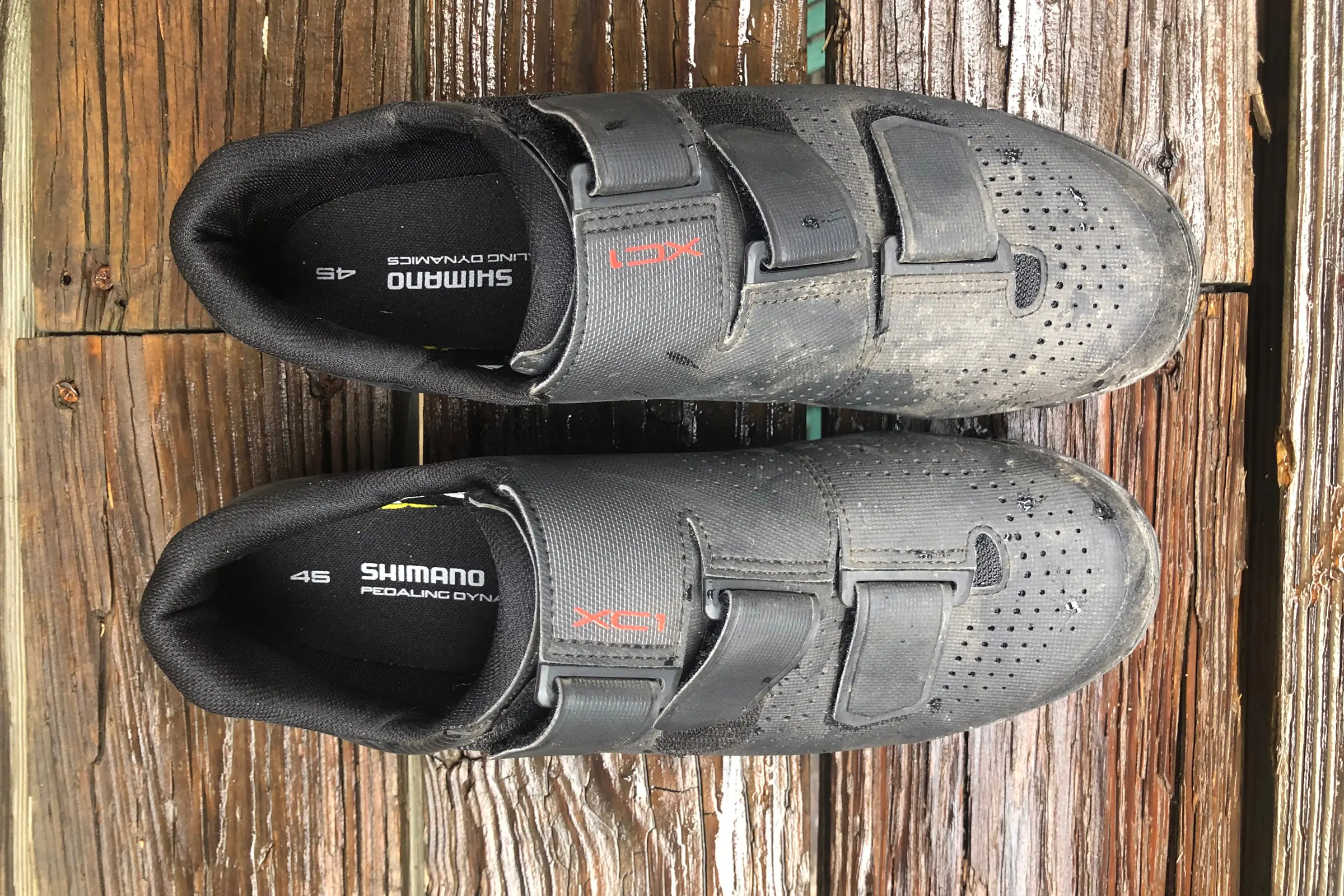



The Shimano XC1, on the other hand, was still looking fairly fresh. It isn’t a burly shoe, but the materials are slightly thicker, handling the thrashing from rocks and hiking fairly well.
The fastening mechanism is the one durability arena where the Shimano S-PHYRE XC9 might beat the XC1. Shoe Velcro is notoriously short-lived, whereas BOAs these days tend to work phenomenally if they aren’t slammed into a rock or over-torqued.
Plus, BOA dials and cables are typically easy to replace when they do fail. For the record, neither fastening system showed concerning signs of premature wear during the test period.
Shimano S-PHYRE XC9 vs. Shimano XC1: Final Thoughts
It doesn’t matter how well they ride; most cyclists aren’t going to shell out $430 for a top-end racing shoe. On the trail, the Shimano S-PHYRE XC9 ticked all the boxes for cross-country racing. They’re ultra-stiff, powerful, incredibly light, and surprisingly comfortable, even if they struggle slightly in the durability department.
The XC1 is less than a quarter of the price of the flagship shoe but performed well on the trail, especially for beginner and intermediate riders. They trade out the rigid sole, ultra-competitive power transfer, and custom-feeling fit but also gain vibration damping, a softer ride, and more hiking comfort.
Thankfully, shoe buying isn’t a dichotomy. Even within Shimano’s offerings, three other models bridge the gap between the XC1 and the S-PHYRE XC9 in both price and performance. The XC3, XC5, and the XC7. Like most product spectrums, most folks will find their ideal fit somewhere in the middle.
Yes, the Shimano S-PHYRE XC9 is a stellar cross-country and gravel shoe, but even Shimano’s entry-level XC1 fits the bill for crushing climbs, ripping corners, and keeping the pedals spinning for long days in the saddle.
